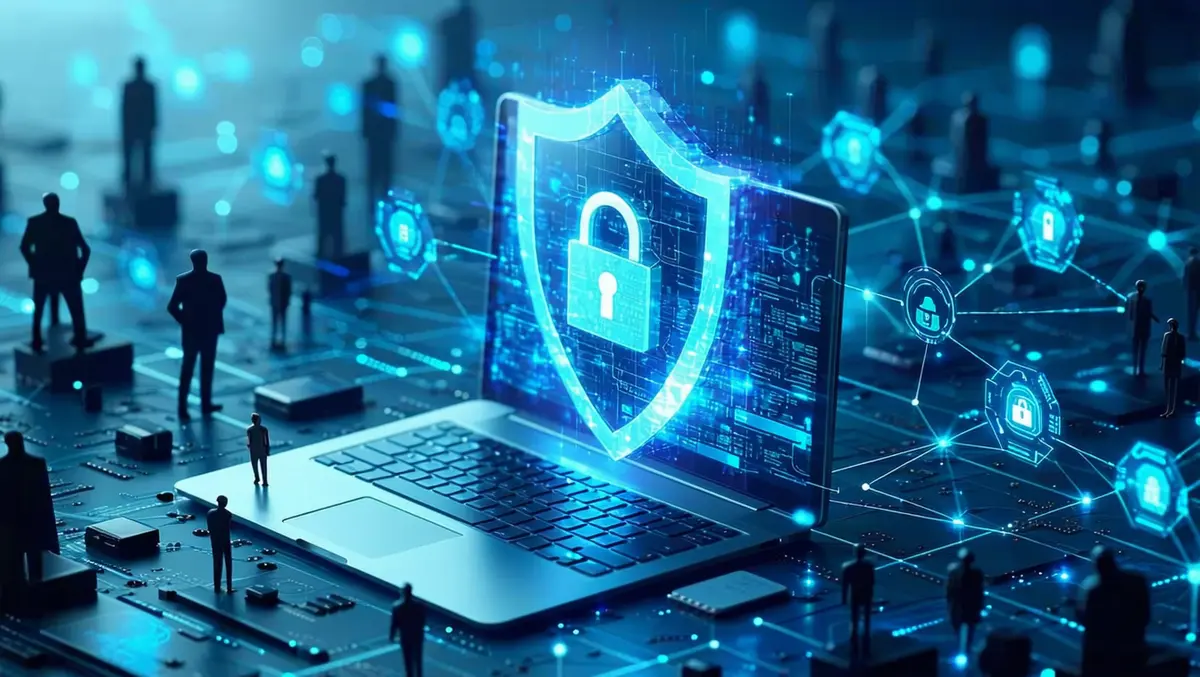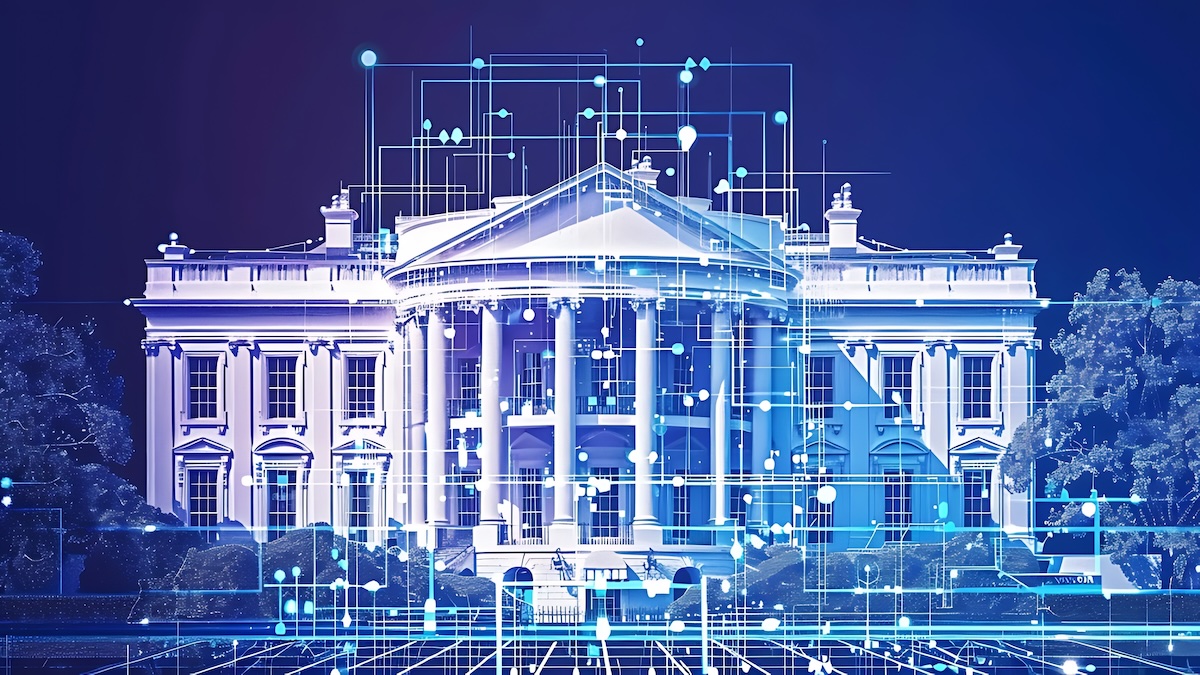Quote for the day:
“If you genuinely want something, don’t wait for it–teach yourself to be impatient.” -- Gurbaksh Chahal
GenAI fueling employee impersonation with biometric spoofs and counterfeit ID fraud

The annual AuthenticID report underlines the surging wave of AI-powered identity fraud, with rising biometric spoofs and counterfeit ID fraud attempts. The 2025 State of Identity Fraud Report also looks at how identity verification tactics and technology innovations are tackling the problem. “In 2024, we saw just how sophisticated fraud has now become: from deepfakes to sophisticated counterfeit IDs, generative AI has changed the identity fraud game,” said Blair Cohen, AuthenticID founder and president. ... “In 2025, businesses should embrace the mentality to ‘think like a hacker’ to combat new cyber threats,” said Chris Borkenhagen, chief digital officer and information security officer at AuthenticID. “Staying ahead of evolving strategies such as AI deepfake-generated documents and biometrics, emerging technologies, and bad actor account takeover tactics are crucial in protecting your business, safeguarding data, and building trust with customers.” ... Face biometric verification company iProov has identified the Philippines as a particular hotspot for digital identity fraud, with corresponding need for financial institutions and consumers to be vigilant. “There is a massive increase at the moment in terms of identity fraud against systems using generative AI in particular and deepfakes,” said iProove chief technology officer Dominic Forrest.
Cyber experts urge proactive data protection strategies

"Every organisation must take proactive measures to protect the critical data it
holds," Montel stated. Emphasising foundational security practices, he advised
organisations to identify their most valuable information and protect potential
attack paths. He noted that simple steps can drastically contribute to overall
security. On the consumer front, Montel highlighted the pervasive nature of data
collection, reminding individuals of the importance of being discerning about
the personal information they share online. "Think before you click," he
advised, underscoring the potential of openly shared public information to be
exploited by cybercriminals. Adding to the discussion on data resilience, Darren
Thomson, Field CTO at Commvault, emphasised the changing landscape of cyber
defence and recovery strategies needed by organisations. Thompson pointed out
that mere defensive measures are not sufficient; rapid recovery processes are
crucial to maintain business resilience in the event of a cyberattack. The
concept of a "minimum viable company" is pivotal, where businesses ensure
continuity of essential operations even when under attack. With cybercriminal
tactics becoming increasingly sophisticated, doing away with reliance solely on
traditional backups is necessary.
Trump Administration Faces Security Balancing Act in Borderless Cyber Landscape

The borderless nature of cyber threats and AI, the scale of worldwide
commerce, and the globally interconnected digital ecosystem pose significant
challenges that transcend partisanship. As recent experience makes us all too
aware, an attack originating in one country, state, sector, or company can
spread almost instantaneously, and with devastating impact. Consequently,
whatever the ideological preferences of the Administration, from a pragmatic
perspective cybersecurity must be a collaborative national (and international)
activity, supported by regulations where appropriate. It’s an approach taken
in the European Union, whose member states are now subject to the Second
Network Information Security Directive (NIS2)—focused on critical national
infrastructure and other important sectors—and the financial sector-focused
Digital Operational Resilience Act (DORA). Both regulations seek to create a
rising tide of cyber resilience that lifts all ships and one of the core
elements of both is a focus on reporting and threat intelligence sharing.
In-scope organizations are required to implement robust measures to detect
cyber attacks, report breaches in a timely way, and, wherever possible, share
the information they accumulate on threats, attack vectors, and techniques
with the EU’s central cybersecurity agency (ENISA).
Infrastructure as Code: From Imperative to Declarative and Back Again

Today, tools like Terraform CDK (TFCDK) and Pulumi have become popular choices
among engineers. These tools allow developers to write IaC using familiar
programming languages like Python, TypeScript, or Go. At first glance, this is
a return to imperative IaC. However, under the hood, they still generate
declarative configurations — such as Terraform plans or CloudFormation
templates — that define the desired state of the infrastructure. Why the
resurgence of imperative-style interfaces? The answer lies in a broader trend
toward improving developer experience (DX), enabling self-service, and
enhancing accessibility. Much like the shifts we’re seeing in fields such as
platform engineering, these tools are designed to streamline workflows and
empower developers to work more effectively. ... The current landscape
represents a blending of philosophies. While IaC tools remain fundamentally
declarative in managing state and resources, they increasingly incorporate
imperative-like interfaces to enhance usability. The move toward
imperative-style interfaces isn’t a step backward. Instead, it highlights a
broader movement to prioritize developer accessibility and productivity,
aligning with the emphasis on streamlined workflows and self-service
capabilities.
How to Train AI Dragons to Solve Network Security Problems
We all know AI’s mantra: More data, faster processing, large models and you’re
off to the races. But what if a problem is so specific — like network or DDoS
security — that it doesn’t have a lot of publicly or privately available data
you can use to solve it? As with other AI applications, the quality of the
data you feed an AI-based DDoS defense system determines the accuracy and
effectiveness of its solutions. To train your AI dragon to defend against DDoS
attacks, you need detailed, real-world DDoS traffic data. Since this data is
not widely and publicly available, your best option is to work with experts
who have access to this data or, even better, have analyzed and used it to
train their own AI dragons. To ensure effective DDoS detection, look at
real-world, network-specific data and global trends as they apply to the
network you want to protect. This global perspective adds valuable context
that makes it easier to detect emerging or worldwide threats. ... Predictive
AI models shine when it comes to detecting DDoS patterns in real-time. By
using machine learning techniques such as time-series analysis, classification
and regression, they can recognize patterns of attacks that might be invisible
to human analysts.
How law enforcement agents gain access to encrypted devices

When a mobile device is seized, law enforcement can request the PIN, password,
or biometric data from the suspect to access the phone if they believe it
contains evidence relevant to an investigation. In England and Wales, if the
suspect refuses, the police can give a notice for compliance, and a further
refusal is in itself a criminal offence under the Regulation of Investigatory
Powers Act (RIPA). “If access is not gained, law enforcement use forensic tools
and software to unlock, decrypt, and extract critical digital evidence from a
mobile phone or computer,” says James Farrell, an associate at cyber security
consultancy CyXcel. “However, there are challenges on newer devices and success
can depend on the version of operating system being used.” ... Law enforcement
agencies have pressured companies to create “lawful access” solutions,
particularly on smartphones, to take Apple as an example. “You also have the
co-operation of cloud companies, which if backups are held can sidestep the need
to break the encryption of a device all together,” Closed Door Security’s Agnew
explains. The security community has long argued against law enforcement
backdoors, not least because they create security weaknesses that criminal
hackers might exploit. “Despite protests from law enforcement and national
security organizations, creating a skeleton key to access encrypted data is
never a sensible solution,” CreateFuture’s Watkins argues.
The quantum computing reality check

Major cloud providers have made quantum computing accessible through their
platforms, which creates an illusion of readiness for enterprise adoption.
However, this accessibility masks a fatal flaw: Most quantum computing
applications remain experimental. Indeed, most require deep expertise in quantum
physics and specialized programming knowledge. Real-world applications are
severely limited, and the costs are astronomical compared to the actual value
delivered. ... The timeline to practical quantum computing applications is
another sobering reality. Industry experts suggest we’re still 7 to 15 years
away from quantum systems capable of handling production workloads. This
extended horizon makes it difficult to justify significant investments. Until
then, more immediate returns could be realized through existing technologies.
... The industry’s fascination with quantum computing has made companies fear
being left behind or, worse, not being part of the “cool kids club”; they want
to deliver extraordinary presentations to investors and customers. We tend to
jump into new trends too fast because the allure of being part of something
exciting and new is just too compelling. I’ve fallen into this trap myself. ...
Organizations must balance their excitement for quantum computing with practical
considerations about immediate business value and return on investment. I’m
optimistic about the potential value in QaaS.
Digital transformation in banking: Redefining the role of IT-BPM services

IT-BPM services are the engine of digital transformation in banking. They
streamline operations through automation technologies like RPA, enhancing
efficiency in processes such as customer onboarding and loan approvals. This
automation reduces errors and frees up staff for strategic tasks like
personalised customer support. By harnessing big data analytics, IT-BPM empowers
banks to personalise services, detect fraud, and make informed decisions,
ultimately improving both profitability and customer satisfaction. Robust
security measures and compliance monitoring are also integral, ensuring the
protection of sensitive customer data in the increasingly complex digital
landscape. ... IT-BPM services are crucial for creating seamless, multi-channel
customer experiences. They enable the development of intuitive platforms,
including AI-driven chatbots and mobile apps, providing instant support and
convenient financial management. This focus extends to personalised services
tailored to individual customer needs and preferences, and a truly integrated
omnichannel experience across all banking platforms. Furthermore, IT-BPM fosters
agility and innovation by enabling rapid development of new digital products and
services and facilitating collaboration with fintech companies.
Revolutionizing data management: Trends driving security, scalability, and governance in 2025

Artificial Intelligence and Machine Learning transform traditional data
management paradigms by automating labour-intensive processes and enabling
smarter decision-making. In the upcoming years, augmented data management
solutions will drive efficiency and accuracy across multiple domains, from data
cataloguing to anomaly detection. AI-driven platforms process vast datasets to
identify patterns, automating tasks like metadata tagging, schema creation and
data lineage mapping. ... In 2025, data masking will not be merely a compliance
tool for GDPR, HIPPA, or CCPA; it will be a strategic enabler. With the rise in
hybrid and multi-cloud environments, businesses will increasingly need to secure
sensitive data across diverse systems. Specific solutions like IBM, K2view,
Oracle and Informatica will revolutionize data masking by offering scale-based,
real-time, context-aware masking. ... Real-time integration enhances customer
experiences through dynamic pricing, instant fraud detection, and personalized
recommendations. These capabilities rely on distributed architectures designed
to handle diverse data streams efficiently. The focus on real-time integration
extends beyond operational improvements.
Deploying AI at the edge: The security trade-offs and how to manage them
The moment you bring compute nodes into the far edge, you’re automatically
exposing a lot of security challenges in your network. Even if you expect them
to be “disconnected devices,” they could intermittently connect to transmit
data. So, your security footprint is expanded. You must ensure that every piece
of the stack you’re deploying at the edge is secure and trustworthy, including
the edge device itself. When considering security for edge AI, you have to think
about transmitting the trained model, runtime engine, and application from a
central location to the edge, opening up the opportunity for a
person-in-the-middle attack. ... In military operations, continuous data streams
from millions of global sensors generate an overwhelming volume of information.
Cloud-based solutions are often inadequate due to storage limitations,
processing capacity constraints, and unacceptable latency. Therefore, edge
computing is crucial for military applications, enabling immediate responses and
real-time decision-making. In commercial settings, many environments lack
reliable or affordable connectivity. Edge AI addresses this by enabling local
data processing, minimizing the need for constant communication with the cloud.
This localized approach enhances security. Instead of transmitting large volumes
of raw data, only essential information is sent to the cloud.































